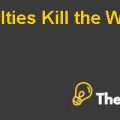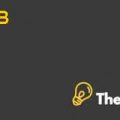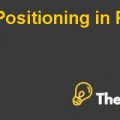Summary
M&M Pizza has been on a rise in terms of profitability; however, the trends have shown that the stock prices are at a stagnant level. The managing director is pondering the possibility to redesign the Capital structure in order to avail less expensive mode of financing debt and hence, increase the value of a firm. The argument is to analyze if the proposed capital structure does reduce the average cost of capital and in turn, helps generate discounted cash flows at a relatively higher margin.
Analysis of the case
M&M Pizza recently started its management issues to be looked after by a newly appointed managing director, Moe Miller. The business has been operating in a quite stable political and economic business environment. The country of operations has a sound system to eradicate any existing possibility of a default risk or country risk. Hence, the borrowing rate equals the prevalent risk free rate in the economy.
The keen talent is eager to play his part in making the business more profitable, and simultaneously increasing the value of the company to provide investors with the incentive of capital gains through elevated stock prices. The probability for him to achieve this was found in restructuring the capital structure by allowing the relatively less expensive mode of financing that is debt financing.
The business, having no debts issue till date, is considered in need to have an optimal capital structure with reasonable portion from all the available mixes i.e., debt and equity. Such structure provides for the management to have higher value of the firm obtained primarily through the least weighted average cost of capital (WACC). The lesser the WACC, the higher is the sum reading of all the discounted free cash flows that account for the increased anticipated value of stock prices.
M&M Pizza Harvard Case Solution & Analysis
With all these objectives in mind, the business is to analyze if the proposed restructuring is worthwhile. The company has a cost of capital equivalent to cost of equity in the present scenario. The management looks forward to a less expensive financing mode that debt financing in which case the rate is just half the rate of the former option. Additionally, it has shown less responsiveness to the market, thus, it has a beta of 0.8. The new managing director intends to exercise a capital structure that would have around F$500M of new debt issues making up 32% of the debt proportion and 68% of equity part amounting to over F$1050. The inclusion of debt in the business will uplift the business risk and the investors will be more likely to demand a higher return in exchange. Surprisingly, the country is expected to implement a corporate tax rate of 20% that will certainly provide incentive to move to debt (a tax deductible mode of financing). However due to the newly incorporated risk component, the beta tends to increase beyond 1 and the resultant cost of equity is certain to elevate...........................
This is just a sample partical work. Please place the order on the website to get your own originally done case solution.












